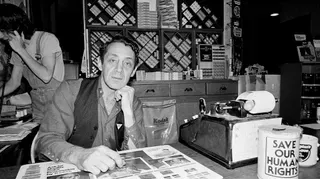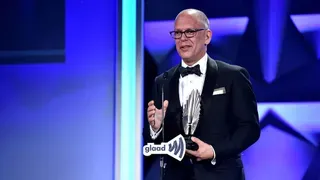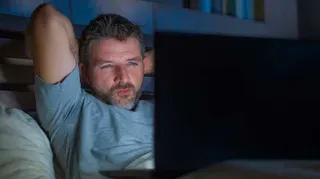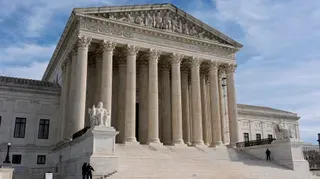April 28, 2011
Homeless LGBT Youth Advocate: Movement Needs to Do More to Protect Kids
Carl Siciliano READ TIME: 4 MIN.
Why is the LGBT movement still failing to protect youth?
A bargain has been struck between LGBT adults and the broader movement for our equality. The "movement" urges each of us to come out of the closet and live our lives openly; an act that can make a difference for ourselves and others, as we all know. But knowing that living openly can be dangerous; the movement works to protect us, seeking to diminish and eliminate discrimination and hostility against us. And while we still have a long way to go to live free and equal lives, it is thrilling to see the tremendous progress that has been made in just a few decades.
But this bargain is not working for many young LGBT people who are coming out in ever greater numbers as the culture around them becomes more aware and seems more accepting.
Nearly all the organized efforts to protect LGBT individuals on the part of our most powerful LGBT organizations benefit adults, not youth and families. The amount of resources and focus directed at protecting teens is small, despite mounting evidence that teens are shouldering an ever-increasing burden of the violence and hostility aimed at the LGBT community.
Nowhere is this failure more evident than in the lack of focus on the catastrophic problem of LGBT youth homelessness. As teens are coming out in greater numbers, thousands are rejected by parents and families unable or unwilling to offer their LGBT children love and support. This phenomenon of youth being rejected and made destitute for lack of family support has become so pervasive that LGBT-identified youth, who make up somewhere between 5 percent and 10 percent of the youth population, comprise up to 40 percent of the nation's homeless youth population.
From my vantage point, there is no more terrible harm being directed at the LGBT community in our times than this. Over the past decade, well over 100,000 LGBT youths have been exiled from their homes, and made to suffer unspeakable hardship on the streets. What they endure is horrific. LGBT youth are frequently the victims of violence, both in homeless shelters and on the streets. Enormous numbers are forced to resort to prostitution to survive, resulting in staggering HIV infection rates. And their risk of suicide is greater than any other segment of LGBT youth: 62 percent of homeless youth admit to having considered or attempted suicide. The role of rejecting families in building an epidemic of youth homelessness may occasionally get the movement's attention, but never seems to retain it.
So what is being done to protect these youths? The answer is: shamefully little. The tiny handful of organizations dedicated to homeless LGBT youth have been able to assemble about 200 beds for a homeless LGBT youth population that numbers in the tens of thousands. Our struggle to protect these youths is very far down the list of the priorities of our larger advocacy organizations, when it is on that list at all. There has been no concerted LGBT effort to develop a strategy to protect these young people.
The adult-centered focus of the LGBT movement, and the disastrous consequences for homeless LGBT youth, have revealed themselves in New York State. Governor Andrew Cuomo, while showing a strong resolve to gain marriage equality for adults, has imultaneously cut financial support for homeless youth shelters in half, thereby disproportionately harming the LGBT youth who make up 40 percent of the 3,800 youths who go without shelter nightly in New York City. Cuomo obviously believed he could close youth shelters and turn children to the streets without losing the support of the LGBT community, provided he delivered marriage equality. And thus far, our community has yet to prove him wrong.
It is not rocket science to figure out why these issues are challenging to the larger LGBT movement. Many adults still shy away from youth issues because of lingering stigma and stereotypes related to working with youth. Some simply carry the baggage of their own childhood experiences. While not for lack of care or compassion, decisions are being made that affect the lives of these children, whose options are few and who struggle to survive.
Recently, we have seen more attention being paid-by the media, the federal government and others-to suicide and bullying of LGBT youth. While it is being treated like some kind of new phenomenon, we must take advantage of the fact that people are paying attention and shift gears - and resources - by coming together as a community and a movement.
So as our community turns its attention to the problems of LGBT youth, we must develop a strategy to leverage the strength of our community and harness some of our power and resources to ensure that homeless youth are included in our focus on that cohort.
To that end, I am working with other groups and individuals on a community forum at the LGBT Center on Tuesday, May 3, at 7 p.m., entitled "Sleeping in the Streets, or Walking Down the Aisle?: Creating a Movement for LGBT Family Equality That Protects Our Most Vulnerable Youth." We are hoping to have a genuine and substantive discussion about this challenge.
We have assembled a panel of individuals who have contributed much to the LGBT movement for equality and experts on LGBT youth homelessness. I am hopeful that we will be joined by many other concerned members of the community, and that we will emerge from the forum with a battle plan to engage the LGBT movement in protecting the thousands of youths who have suffered family rejection and been made to endure homelessness.
For the sake of our own integrity, for the sake of our own growth, but most of all for the sake of our children suffering in the streets, we must create a movement that protects our most vulnerable youth.
For more information about the event, go to www.aliforneycenter.org.
Carl Siciliano is executive director of the Ali Forney
Center







